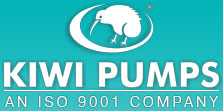
Pumps Information » Condensate Pumps
Condensate Pumps
Condensate Pumps Condensate Pumps are used to collect and transport condensate back into a steam system for reheating and reuse, or to remove unwanted condensate from an HVAC or appliance collection pan.
There are two basic types of condensate pumps: boiler feed pumps and sump pumps. Boiler feed pumps close the boiler, steam and condensate loop by returning the condensate back into the system for reuse. They are designed to reclaim British thermal units (BTU). Sump pumps are installed in compartments to remove the unwanted build-up of water. Complete condensate pump systems that include tanks, valves and other controls are also available. Typically, condensate pumps and pump components are made of aluminum, brass, bronze, cast iron, plastic, or stainless steel. Suppliers of condensate pumps indicate whether their products are designed for commercial or industrial use, or suitable for heating, air conditioning, and ventilation (HVAC) applications.
Important specifications for condensate pumps include power source, maximum discharge flow, maximum discharge pressure, media temperature, tank or reservoir size, and pumps per assembly. Power sources for condensate pumps include AC or DC voltage, hydraulic or pneumatic systems, gasoline or diesel engines, and steam, water, solar power and natural gas. Maximum discharge flow is a function of the system or pressure head that a pump must enter. Units of measure include gallons per hour (GPM), gallons per minute (GPM), and gallons per day (GPD).
Maximum discharge pressure is measured in pounds per square inch (psi), feet or inches of water, and bars or millibars. Tank or reservoir size can be measured in gallons, liters, cubic inches, cubic feet, cubic meters or cubic yards. Pumps-per-assembly is the number of pumps in or near the pump assembly. A lift station may have several internal pumps. A piston pump can have multiple pistons, each of which counts as a pump.Condensate pumps differ in terms of features and certifications. Some products include a leakproof or rustproof tank. Others have a stainless steel shaft for improved corrosion resistance. Motor-driven condensate pumps can have a flame-retardant motor and tank cover.
Electrically-powered products can offer thermal overload protection and an optional safety switch. In terms of certifications, condensate pumps bear the UL Mark and/or the CSA Mark. Underwriters Laboratories (UL) is a non-profit organization that tests components, systems, and materials according to its published standards for safety. Products that bear a CSA Mark have been tested by the Canadian Standards Association (CSA) and meet applicable standards for safety and/or performance. These standards are written and administered by organizations such as UL, CSA International, and the American National Standards Institute (ANSI).
